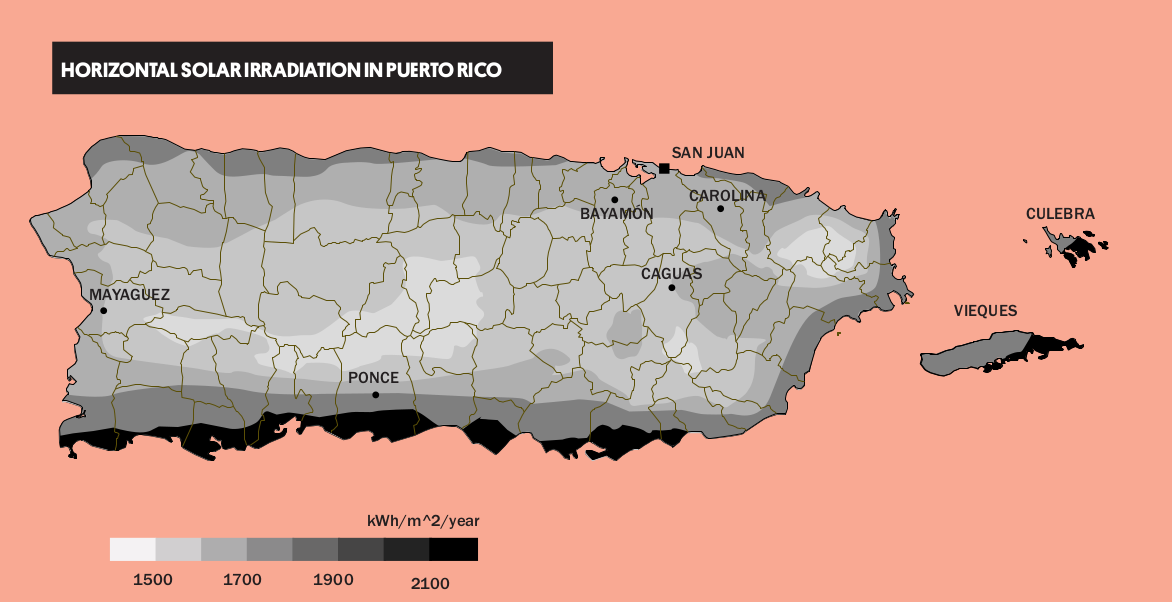4 ENERGY GENERATION + BACKUP
Strategies that provide critical needs for power when a facility loses power or other services
INTRODUCTION
The majority of electrical power in Puerto Rico is produced, transmitted, distributed, and sold by a single source: the Puerto Rico Electric Power Authority (PREPA)/Autoridad de Energía Eléctrica Puerto Rico (AEEPR, by its Spanish acronym). When PREPA’s power plants (largely fueled by natural gas and imported oil) and power lines were completely disabled by Hurricane Maria, millions of people suddenly went without the conveniences of modern life (electricity, refrigeration, and Internet service). Water distribution became impossible when pumps lost power. The situation became life-threatening for people whose medical care depended on electrical devices. Seniors and others who needed air-conditioned spaces suffered from heat-related illnesses. Best estimates indicate that the death toll in Puerto Rico grew by a factor of approximately 1700% in the three months following Maria’s landfall, partly because of the lack of electricity, potable water, and limited access to medical facilities and healthcare.
For years, it has been common knowledge that both equipment and purchasing sources of electricity need to be diversified. Hurricane Maria accelerated the development of new options for homes and communities that are both greener (not dependent on fossil fuels) and more resilient. A growing, alternative energy industry is making renewable technology, such as solar panels and solar thermal systems, available to more people, and is working towards localizing distribution through micro-grids. While emergency generators remain a good support for short-term power loss, new energy systems can provide long-term value.
Along with these technological solutions, the way to scale down dependence on electrical suppliers is to reduce daily energy consumption patterns in your home. This chapter explains how to live using less power, how to evaluate alternative energy systems for year-round use, and how to manage a backup system to get through an emergency.

